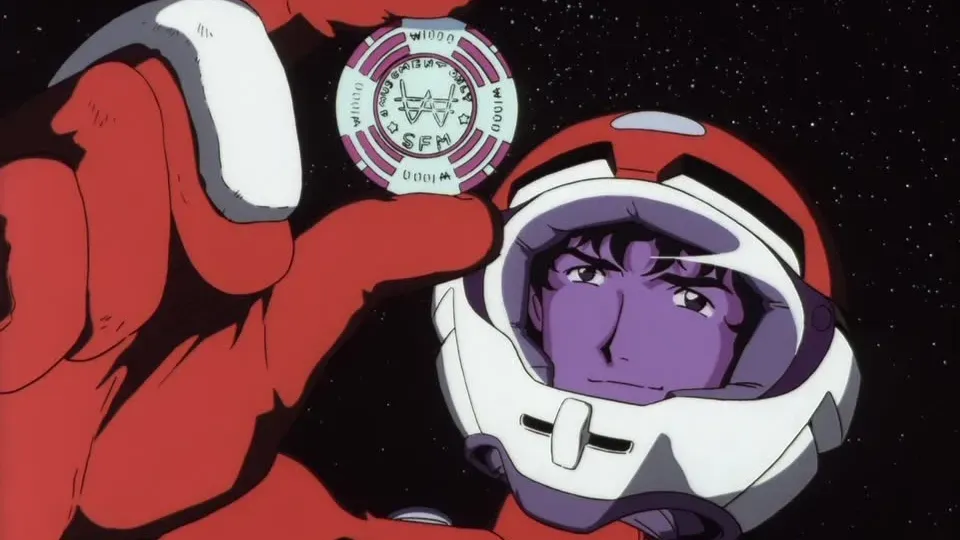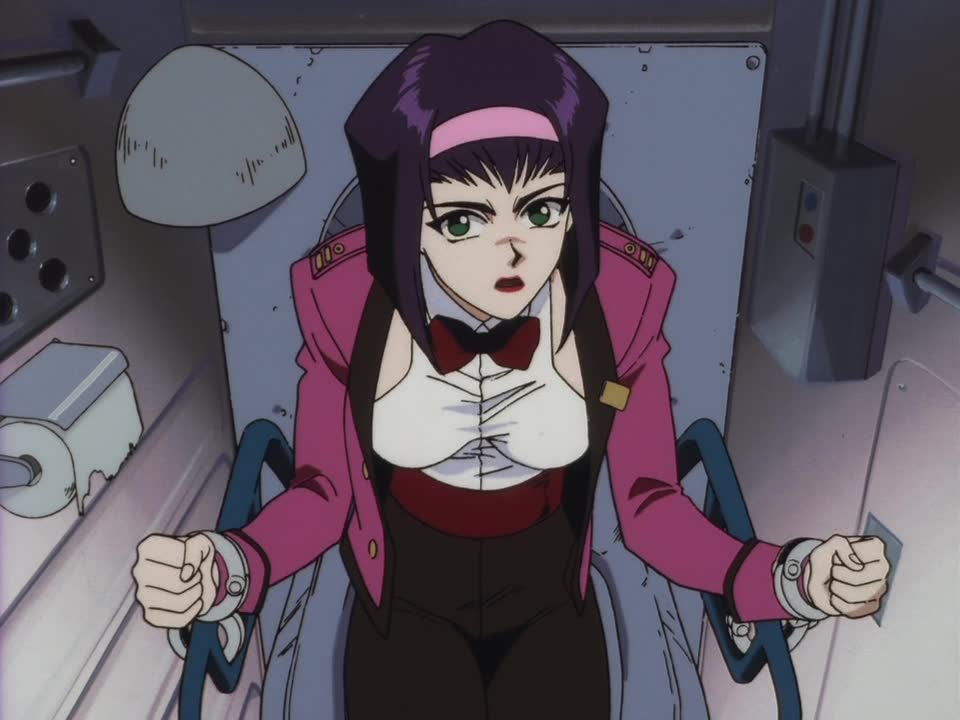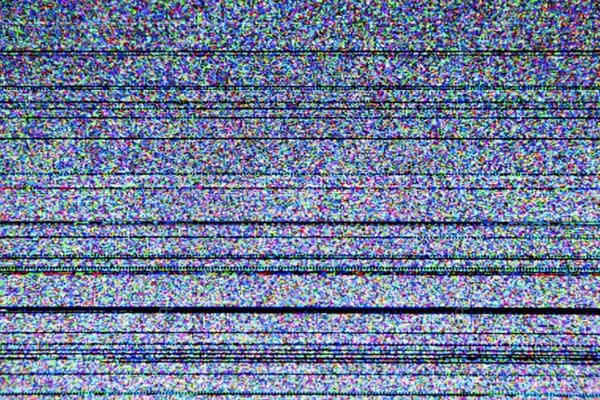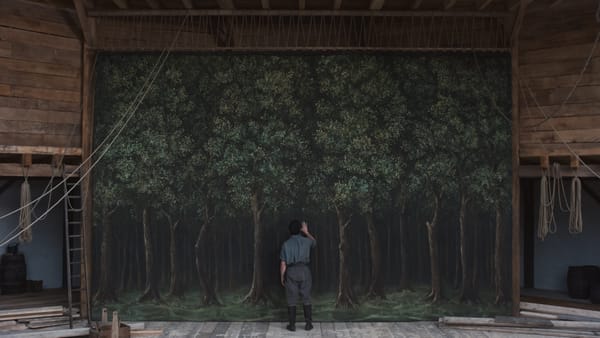Cowboy Bebop: "Honky Tonk Woman" and "Gateway Shuffle"
In which I think about what it means for TV to be "cinematic"

(This is the first installment of my biweekly recaps of Cowboy Bebop, the TV Tokyo animated series that ran from 1998 to 1999 to cult fascination and critical acclaim. I’ve never seen it! These recaps are only available to paid subscribers. You can sign up for a subscription by clicking the button below.)
- “Honky Tonk Woman” (originally aired April 3, 1998 [TV Tokyo], November 7, 1998 [Wowow], and September 10, 2001 [Adult Swim])
- “Gateway Shuffle” (originally aired April 10, 1998 [TV Tokyo], November 14, 1998 [Wowow] and September 10, 2001 [Adult Swim])
"I been told y’all to stop talking shit about my boy Sam Levinson," Euphoria co-producer and playwright Jeremy O. Harris tweeted soon after the second season's fifth episode aired. "THIS SEASON OF EUPHORIA is made for ppl with an intellect for CINEMA and not the impatience of TELEVISION."
As happens almost any time someone implicitly denigrates the podunk confines of television in the name of building up the castle that is The Cinema, Harris's tweet stirred up a minor discourse on Twitter dot com, as you can see here, here, and here. Harris later clarified that he also loves television, which should probably be clear to anyone who's followed him on Twitter through the years. (It's here I should note that I have had several lovely interactions with Harris over the years, and he once got me tickets to his show Slave Play. I liked it!) But this discourse squall broke precisely when I was trying to find an angle from which to approach these two episodes of Cowboy Bebop. Thank you to Jeremy O. Harris.
My feelings on the "TV vs. movies" debate have evolved substantially over the years. In the past, I would get deeply frustrated with non-TV people riding down the medium I loved so much. (The nadir was probably the "Is Twin Peaks a film??" argument.) But the more times this debate has resurfaced over my years working in cultural journalism, the more I've realized that I don't care. There are things TV does really well that films struggle to do and vice versa. Bad TV often results from people who primarily make films trying to stretch TV out like taffy into something more like a movie, but bad films often result from treating enormous movie franchises as ongoing TV shows. Don't you see?? It's the circle of life!!
What we're really debating here is the old argument around what makes TV "cinematic." This argument often tends to be a proxy debate over whether we should value images or words more in filmed entertainment. TV, long a medium where stuff was produced quickly and cheaply, rarely took the time to create shows with striking visuals. As such, it became a medium that played to the strengths of writers who could write lots of good stuff very quickly.
But it's not like there were never shows that boasted strong visual styles. They popped up throughout TV history, and in the 1990s, the visuals of TV became more distinctive, and critics first made the "TV is better than the movies!" arguments in earnest.
And guess what show was made in the 1990s?
That's right. It's Cowboy Bebop
Watching "Honky Tonk Woman" and "Gateway Shuffle" amid this discourse in a teapot was striking, precisely because these episodes are at once deeply cinematic and deeply driven by the needs of episodic television. They look gorgeous, and the music remains terrific throughout. What's more, the twists and turns packed into every episode offer larger glimpses of a world where things have fallen off a cliff. The procedural worldbuilding I wrote about last time keeps adding layers to the story, even as episodes don't seem to add up to much more as a whole. (Yet even as I say that, consider that these two episodes add an entirely new character to the show's core ensemble.)
Watch these two episodes keeping an eye toward what people in 1998 or 2001 might have thought, and it's easy to see why this show's style blew people away. Bebop's particular blend of influences wasn't like much else out there at the time, and its aesthetics are so effortlessly, confidently cool. If I had somehow managed to see this when it first aired on Adult Swim (and I have no idea why I didn't, as a habitual Adult Swim viewer at the time), it would have blown my mind.
But watch these episodes through the lens of a network executive making decisions in 2022, and you'll see all of the ways they're too TV for the "cinematic television" of the moment. As an example, "Gateway Shuffle" features a dastardly criminal who's like a combination of Jean Smart's character on Fargo and the vampire Lady Dimitrescu from the latest Resident Evil. What's more, she's attempting to spread a virus that turns people into apes. What's even more, she's head of a band of eco-terrorists. What's Vince-McMahon-seeming-to-explode-in-orgasmic-joy, her name is Twinkle Maria Murdoch.

A modern show likely would take Murdoch and make her at least a minor recurring character. "Gateway Shuffle" not only dispatches with all of the above ideas in 24 minutes of television, but it also sends Murdoch off stage left, turning her and her sons into apes. She exists within the show's world to tell us more about the world and about how Spike and Faye deal with problems. Murdoch isn't as important as what she can give the main storylines and characters. It's economical in a way much modern TV isn't.
Thus, Cowboy Bebop exists amid a TV era where "cinematic" visuals (for lack of a better term) were becoming more economical to produce, even as the medium kept one foot in its more traditionally episodic past. Episodes of the show can feel big and brilliant and movie-like while also being recognizably episodes of television. They keep pushing the edges of how stylish TV can be while remaining happy to be recognizably television.
The argument about cinematic television is a bit of a false flag is what I'm trying to say. The needs of one show may not be the needs of another, and it's worthwhile for every show to think a bit about its visual presentation. (I Think You Should Leave is visually inventive on what seems to be a pretty minimal budget, for instance.) But the show's needs sometimes call for a more astonishing visual presentation (as they do in Cowboy Bebop) and sometimes call for a presentation that keeps things squarely focused on the text. Saying either approach is better than the other is writing off whole gobs of shows that don't require that approach.
That out of the way, let's talk about Faye Valentine.
Faye Valentine: What's up with that?
Given my long-standing history of liking "the girl" best in shows like this, I was all ready to get super hyped for Faye. And while I think she's cool so far, I'm not entirely sure what's meant to be her character beyond "girl Spike."
I know! I've surely sent some of you into paroxysms of concern and terror. I will almost certainly be eating my words in a few weeks when I see an episode where Faye singlehandedly takes down capitalism or something, thus causing me to realize that she is, indeed, the greatest character of all time. But I'm reminded a bit of how long it took me to warm to Katara on Avatar. I ended up liking her a lot, but for too much of the show's run, she was just "the girl."

"Here is the one with boobs" can be character development. It can! On a show like this, it's clear Spike and Jet Black are running a pretty tight, bachelor-oriented ship, and having Ein and Faye crash their world is a pretty good way to establish how differently they're about to experience the world. The show's overall scheme of opening on an episode where the two just carry out a mission on their own, then slowly adding new characters to their team, is a good one. It allows us to get a sense of the dynamics without drawing anything out too much.
But it remains to be said: In these two episodes, Faye's character largely boils down to the fact that she's a woman. And on a show as aggressively horny as Cowboy Bebop, the fact that she's a woman is conveyed frequently, via leering shots of her in various states of scantily cladness.
I want to be very hasty to add, "Not that there's anything wrong with that!" here. Objectification for objectification's sake is rarely my bag, but I do think that Cowboy Bebop is trying something here. It's clear that Faye's "oops! almost naked!" deal is the way that she's chosen to deal with a harsh world and a harsher line of work. The more we get to know her, the more we realize that she uses her sexiness as a kind of front. I can see a way this could work for sure.
But at the same time, it's so '90s, right? The hot girl with her boobs hanging out joins the team? You'll forgive me if I roll my eyes just a little bit. I'm jazzed enough about everything else in this show to go along with it, but I'm very much casting a skeptical eye in her general direction.
(Please don't tell me if Faye ends capitalism, but do tell me if she becomes worthy of the name Faye Valentine sooner or later.)

Other thoughts I thought:
- I will be honest: I wrote almost all of the above a couple of weeks ago, then never got back to it, so I have basically nothing to fill this section. My memories of the episodes are all gone!
- It's here I reveal that I never take notes, which makes me a bad critic.
- One thing I did like was that the virus turned people into apes! That's some real X-Men shit, if you think about it.
- I also liked the space gambling. Space casinos seem like they'd be pretty fun to hang out in.
- I watched these episodes with the dubs, and honestly, I think I'm gonna stick with the subs. The actors were fine, but I preferred the Japanese language performers.
Next time: Since I missed some pub dates, you get two Bebops in a row! On Monday, I'll be back with "Ballad of Fallen Angels" and "Sympathy for the Devil." Angels and the Devil? Well, I never!




